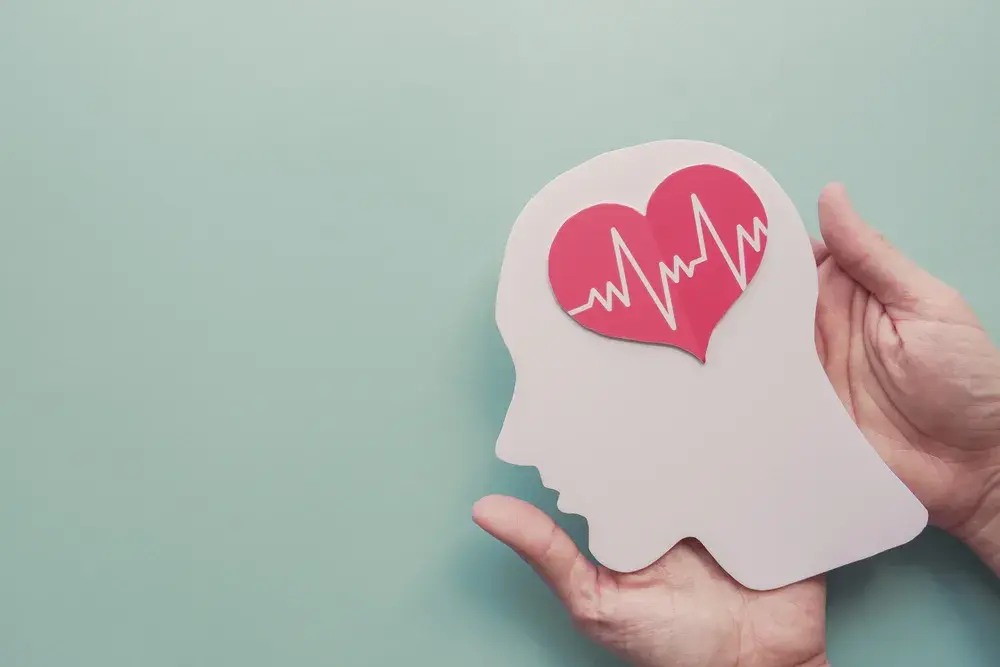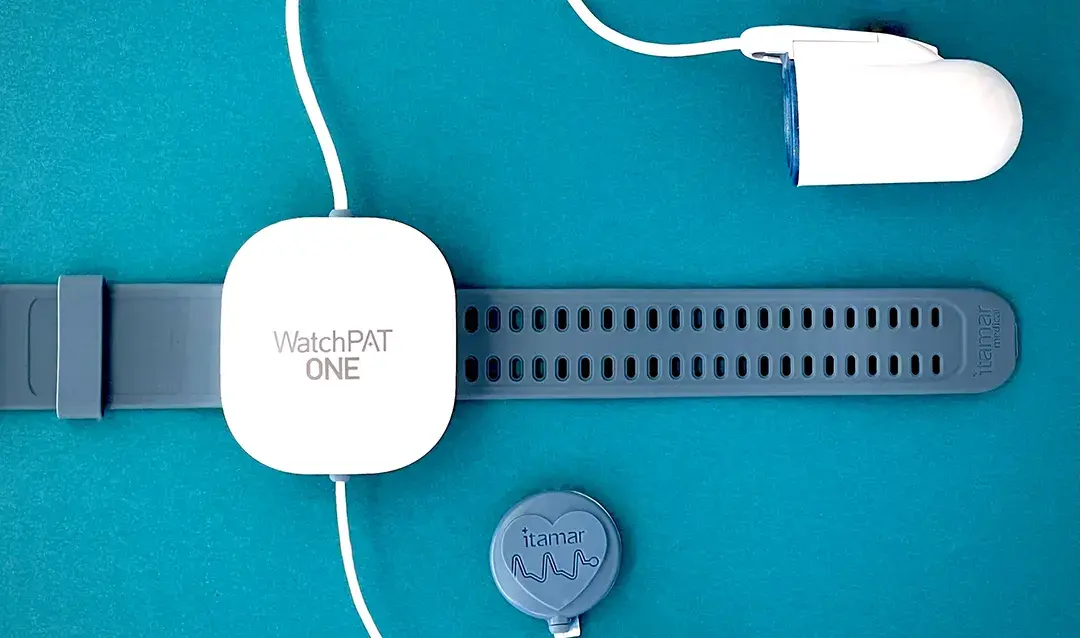Sleep Apnea Symptoms in Women Are Different — Here’s What To Look For
They're often mistaken for other conditions or dismissed entirely

When we think about sleep apnea, the image that comes to mind is usually a middle-aged man snoring so loudly the whole room shakes. While it’s true that anyone who snores intensely should get tested for obstructive sleep apnea (OSA), the misconception that only snoring men have this condition has led to many women going undiagnosed and untreated for a dangerous sleep disorder. In fact, it’s estimated that 93% of women with moderate to severe sleep apnea haven’t been diagnosed, and many of these women believe they aren’t even at risk.
“The reality is that sleep apnea doesn't discriminate based on gender, and it’s just as dangerous for women as it is for men,” says sleep physician Inell Rosario, M.D. Sleep apnea, which disrupts your breathing as you sleep and prevents your body from getting enough oxygen, can lead to a host of major health issues, including stroke, diabetes, and heart disease. This sleep disorder is worth taking seriously — and should be caught early and addressed as quickly as possible.
However, it’s difficult to do that when women with OSA symptoms are less likely to be correctly diagnosed and treated for OSA than men. Women are underrepresented in sleep apnea studies, which means that men’s symptoms have become the default setting for sleep apnea diagnosis, even if they’re not necessarily representative of the population as a whole.
Common sleep apnea symptoms in women
A lot of women snore — even when they think they don’t — and snoring is a major sleep apnea symptom for women as well as men. However, many sleep apnea symptoms in women are subtle and easily mistaken for other issues. Here are some symptoms that tend to happen more frequently in women and are often overlooked or misdiagnosed:
1. Daytime sleepiness and fatigue
Consistent daytime sleepiness and lack of energy can be due to a lot of different causes, not just OSA, but this symptom is a major indicator that you should consider getting tested for sleep apnea.
“Female patients are much more likely to miss this very important sleep apnea symptom,” says Dr. Rosario. “I think for women, the level of fatigue has to be awfully high before we’ll think there’s something actually wrong and not just assume that we’re exhausted as a result of leading busy lives and having a lot going on at home and at work, etc.”
2. Depression and anxiety
Sleep apnea and depression can go hand-in-hand for people of all genders, but women are more likely to experience mood disorders like depression and anxiety as sleep apnea symptoms than men. These symptoms can be difficult to trace back to sleep apnea, especially for people who don’t snore, since you might not necessarily associate the two.
3. Frequent nighttime trips to the bathroom
“If you get up to use the bathroom at night, you might write that off, thinking, ‘Oh, I'm just getting older,’ or if you’ve given birth, you might think, ‘My bladder’s gotten weaker since I had kids,’” says Dr. Rosario. “However, the root cause might actually be sleep apnea.” This symptom is especially prevalent in postmenopausal women, but waking up in the night to go to the bathroom can be a symptom for anyone.
4. Morning headaches
OSA-related headaches frequently appear when you first wake up and typically dissipate fairly quickly. The severity of the headache is often connected to the severity of OSA, so if you have less intense headaches, your sleep apnea might not be as intense — but it still needs to be addressed.
5. Insomnia
Insomnia is one of the most common symptoms of sleep apnea in women, and insomnia and sleep apnea are the sleep disorders that appear together most frequently. There are multiple types of insomnia, including sleep onset insomnia (difficulty falling asleep) and sleep maintenance insomnia (difficulty staying asleep), and both are symptoms of OSA.
6. Night sweats
If you find yourself waking up in sweaty sheets when the room is otherwise cool and the blankets aren’t too heavy, you may have sleep apnea. Nocturnal sweating — aka sweating at night — is three times more common in people with OSA than in the general population, and more women with sleep apnea report this symptom than men.
7. Memory and attention issues
Sleep apnea can harm your ability to remember things. Studies show that OSA can impair your ability to pay attention, your memory, your ability to learn new information, and your ability to juggle multiple tasks at once. Although anyone with sleep apnea can have memory and attention issues, studies show that these symptoms tend to appear more frequently in women.
Pregnancy and sleep apnea
Sleep apnea is underdiagnosed in pregnant women. Some of these women had OSA before their pregnancy but weren’t diagnosed, while others develop sleep apnea during their pregnancy, a disorder called “gestational OSA.” Although women can develop gestational OSA in their first trimester, the risk increases later in the pregnancy due to all the hormonal and anatomical changes pregnancy causes.
Women with untreated OSA are at higher risk of complicated pregnancy, including hypertension, heart disease, gestational diabetes, and preeclampsia. They’re also more likely to have a C-section and experience delayed healing after birth. Due to so many increased risks, women with OSA are five times more likely to die in childbirth.
Menopause and sleep apnea
Although women can develop OSA at any age, post-menopausal women are at significantly higher risk. Sleep disorders in general become more common starting just prior to menopause, during a period known as “perimenopause,” when hormone levels become more irregular. These symptoms tend to worsen throughout menopause and into post-menopause, including insomnia, which impacts approximately 50% of midlife women.
The good news
Treating sleep apnea has been clinically shown to significantly improve sleep apnea symptoms and lower the risk of associated diseases — and can even reverse damage. Both CPAP machines and customized oral appliances have been shown in studies to control sleep apnea and improve symptoms ranging from snoring to daytime sleepiness and depression.
“We all know that sleep is great, we just need to make it more of a priority — and I’m including myself here,” says Dr. Rosario. “Remember: sleep is such an important way for you to renew yourself, renew your body, and decrease your risk for signs of aging, and I’m talking from superficial issues like wrinkles all the way to critical concerns like mental quickness. Good sleep helps us perform better at everything else we do.”
Geer JH, Hilbert J. Gender Issues in Obstructive Sleep Apnea. Yale J Biol Med. 2021;94(3):487-496. Published 2021 Sep 30.
Young T, Evans L, Finn L, Palta M. Estimation of the clinically diagnosed proportion of sleep apnea syndrome in middle-aged men and women. Sleep. 1997;20(9):705-706. doi:10.1093/sleep/20.9.705
Surani SR. Diabetes, sleep apnea, obesity and cardiovascular disease: Why not address them together?. World J Diabetes. 2014;5(3):381-384. doi:10.4239/wjd.v5.i3.381
Lindberg E, Benediktsdottir B, Franklin KA, et al. Women with symptoms of sleep-disordered breathing are less likely to be diagnosed and treated for sleep apnea than men. Sleep Med. 2017;35:17-22. doi:10.1016/j.sleep.2017.02.032
Ye L, Pien GW, Weaver TE. Gender differences in the clinical manifestation of obstructive sleep apnea. Sleep Med. 2009;10(10):1075-1084. doi:10.1016/j.sleep.2009.02.006
Westreich R, Gozlan-Talmor A, Geva-Robinson S, et al. The Presence of Snoring as Well as its Intensity Is Underreported by Women. J Clin Sleep Med. 2019;15(3):471-476. Published 2019 Mar 15. doi:10.5664/jcsm.7678
Chervin RD. Sleepiness, fatigue, tiredness, and lack of energy in obstructive sleep apnea. Chest. 2000;118(2):372-379. doi:10.1378/chest.118.2.372
Chen YH, Keller JK, Kang JH, Hsieh HJ, Lin HC. Obstructive sleep apnea and the subsequent risk of depressive disorder: a population-based follow-up study. J Clin Sleep Med. 2013;9(5):417-423. Published 2013 May 15. doi:10.5664/jcsm.2652
Diaz SV, Brown LK. Relationships between obstructive sleep apnea and anxiety. Curr Opin Pulm Med. 2016;22(6):563-569. doi:10.1097/MCP.0000000000000326
Koo P, McCool FD, Hale L, Stone K, Eaton CB. Association of obstructive sleep apnea risk factors with nocturnal enuresis in postmenopausal women. Menopause. 2016;23(2):175-182. doi:10.1097/GME.0000000000000517
Goksan B, Gunduz A, Karadeniz D, et al. Morning headache in sleep apnoea: clinical and polysomnographic evaluation and response to nasal continuous positive airway pressure. Cephalalgia. 2009;29(6):635-641. doi:10.1111/j.1468-2982.2008.01781.x
Loh NK, Dinner DS, Foldvary N, Skobieranda F, Yew WW. Do patients with obstructive sleep apnea wake up with headaches?. Arch Intern Med. 1999;159(15):1765-1768. doi:10.1001/archinte.159.15.1765
Ong JC, Crawford MR, Wallace DM. Sleep Apnea and Insomnia: Emerging Evidence for Effective Clinical Management. Chest. 2021;159(5):2020-2028. doi:10.1016/j.chest.2020.12.002
Arnardottir ES, Janson C, Bjornsdottir E, et al. Nocturnal sweating--a common symptom of obstructive sleep apnoea: the Icelandic sleep apnoea cohort. BMJ Open. 2013;3(5):e002795. Published 2013 May 14. doi:10.1136/bmjopen-2013-002795
Gagnon K, Baril AA, Gagnon JF, et al. Cognitive impairment in obstructive sleep apnea. Pathol Biol (Paris). 2014;62(5):233-240. doi:10.1016/j.patbio.2014.05.015
Wallace A, Bucks RS. Memory and obstructive sleep apnea: a meta-analysis. Sleep. 2013;36(2):203-220. Published 2013 Feb 1. doi:10.5665/sleep.2374
Thompson C, Legault J, Moullec G, et al. Association between risk of obstructive sleep apnea, inflammation and cognition after 45 years old in the Canadian Longitudinal Study on Aging. Sleep Med. 2022;91:21-30. doi:10.1016/j.sleep.2022.02.006
Tayade S, Toshniwal S. Obstructive Sleep Apnea in Pregnancy: A Narrative Review. Cureus. 2022;14(10):e30387. Published 2022 Oct 17. doi:10.7759/cureus.30387
Pien GW, Pack AI, Jackson N, Maislin G, Macones GA, Schwab RJ. Risk factors for sleep-disordered breathing in pregnancy. Thorax. 2014;69(4):371-377. doi:10.1136/thoraxjnl-2012-202718
Yinon D, Lowenstein L, Suraya S, et al. Pre-eclampsia is associated with sleep-disordered breathing and endothelial dysfunction. Eur Respir J. 2006;27(2):328-333. doi:10.1183/09031936.06.00010905
Liu L, Su G, Wang S, Zhu B. The prevalence of obstructive sleep apnea and its association with pregnancy-related health outcomes: a systematic review and meta-analysis. Sleep Breath. 2019;23(2):399-412. doi:10.1007/s11325-018-1714-7
Louis JM, Mogos MF, Salemi JL, Redline S, Salihu HM. Obstructive sleep apnea and severe maternal-infant morbidity/mortality in the United States, 1998-2009. Sleep. 2014;37(5):843-849. Published 2014 May 1. doi:10.5665/sleep.3644
Zolfaghari S, Yao C, Thompson C, et al. Effects of menopause on sleep quality and sleep disorders: Canadian Longitudinal Study on Aging. Menopause. 2020;27(3):295-304. doi:10.1097/GME.0000000000001462
Mirer AG, Young T, Palta M, Benca RM, Rasmuson A, Peppard PE. Sleep-disordered breathing and the menopausal transition among participants in the Sleep in Midlife Women Study. Menopause. 2017;24(2):157-162. doi:10.1097/GME.0000000000000744
Hall MH, Kline CE, Nowakowski S. Insomnia and sleep apnea in midlife women: prevalence and consequences to health and functioning. F1000Prime Rep. 2015;7:63. Published 2015 May 26. doi:10.12703/P7-63
Li W, Xiao L, Hu J. The comparison of CPAP and oral appliances in treatment of patients with OSA: a systematic review and meta-analysis. Respir Care. 2013;58(7):1184-1195. doi:10.4187/respcare.02245
Jean-Louis G, Brown CD, Zizi F, et al. Cardiovascular disease risk reduction with sleep apnea treatment. Expert Rev Cardiovasc Ther. 2010;8(7):995-1005. doi:10.1586/erc.10.55
Baril AA, Martineau-Dussault MÈ, Sanchez E, et al. Obstructive Sleep Apnea and the Brain: a Focus on Gray and White Matter Structure. Curr Neurol Neurosci Rep. 2021;21(3):11. Published 2021 Feb 14. doi:10.1007/s11910-021-01094-2




